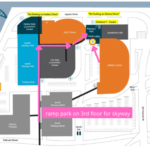A problem that needs addressing
Just about every town has a “0” point for its street addresses. In Duluth, that would be the corner of Lake and Superior, right? 1 E. Superior, 1 W. Superior, 1 N. Lake, etc. The lower the address number, the closer it is to the zero point. And in general, there are imaginary lines that spread out from that point, dividing addresses into north-south, and east-west.
That all works out well in Duluth on the main grid of streets – downtown, West End, West Duluth, Lakeside… but then it starts to get odd.
Up on Central Entrance, for example – the Rose Man shop is at 36 W. Central Entrance – 36? That far from downtown? And almost due north, Nortrax Equipment is at 3401 W. Arrowhead Road. 3401? Due north of 36? How is that possible?
There also are double-digit (i.e. very low) addresses in Woodland, just south of UMD, and on Howard Gnesen Road near Kenwood Super One. And speaking of Kenwood Super One, its address is 1316 W. Arrowhead. West? Would anyone consider that store to be on the west side of town?
I’m guessing these are quirks left over from long, long ago, as the city developed sort of piecemeal – quirks that never got resolved over the years. Maybe there are multiple “zero points” around town?
Recommended Links:
Leave a Comment
Only registered members can post a comment , Login / Register Here













15 Comments
wildgoose
about 15 years agoRamos
about 15 years agoTomasz
about 15 years agoPaul Lundgren
about 15 years agoJelvah
about 15 years agoBarrett Chase
about 15 years agozra
about 15 years agohuitz
about 15 years agohbh1
about 15 years agoemigre
about 15 years agoShane
about 15 years agovicarious
about 15 years agoRamos
about 15 years agoBecca
about 15 years agoakjuneau
about 15 years ago